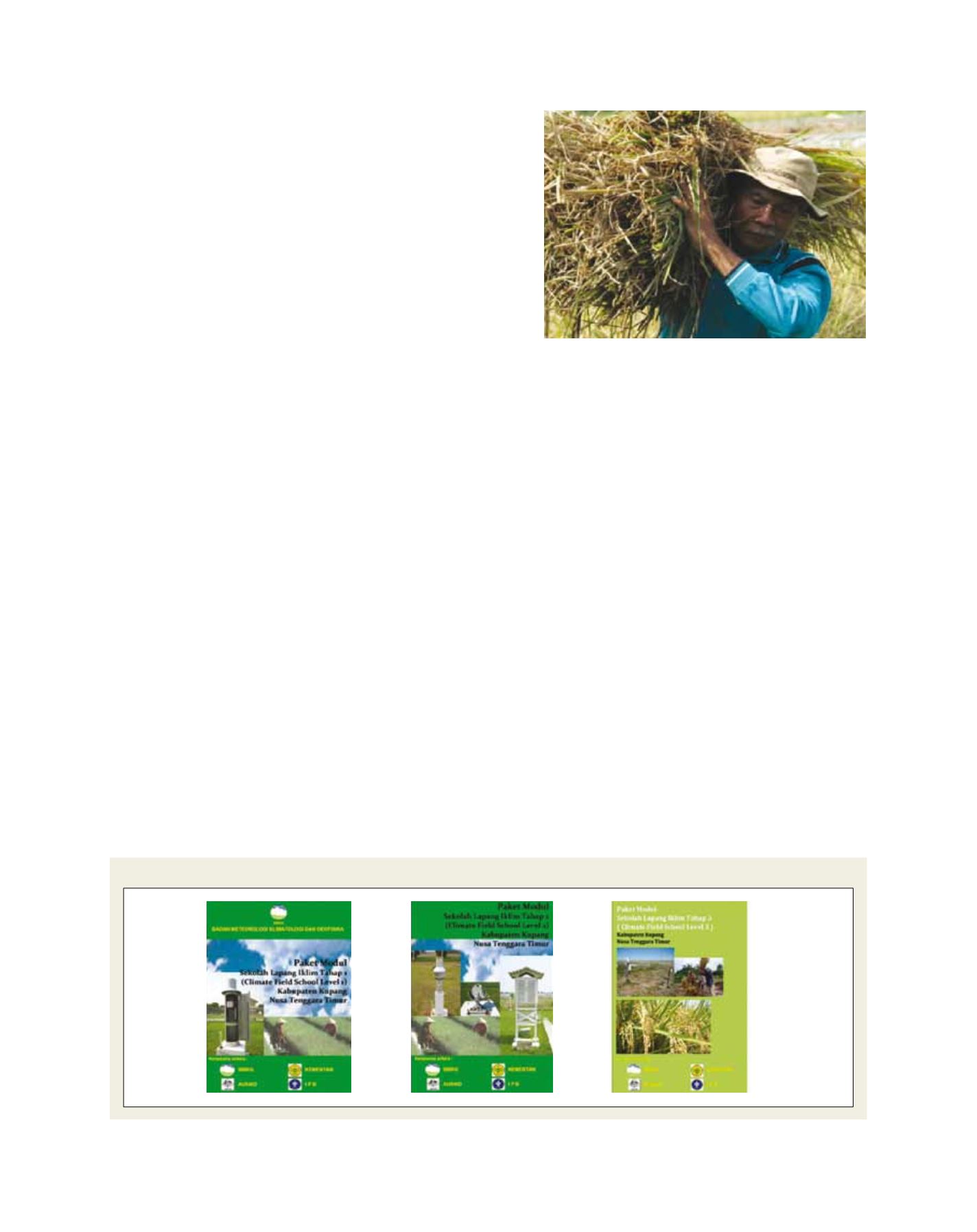

consists of 16 groups) and they actively disseminate what
they have learned from CFS to the group, the series of
CFS from level one to level three can reach more than
2,500 farmers in West Nusa Tenggara Province.
Tackling challenges with new knowledge
Although CFS has proven that it can directly and
significantly improve farmers’ ability to adapt to climate
variability, extending the activity may pose a challenge.
Several issues that may become a hindrance for CFS are:
• Lack of coordination between Government agencies
at the regional level due to changes in Government
systems such as decentralization
• Difficulties in finding an effective method to scale
up the projects as part of national policy to address
climate change
The challenges can be dealt with by findingways of combin-
ing the traditional way of farming based on local wisdom
with new knowledge based on application of climate infor-
mation services. In addition, extension of the activities
beyond the agricultural sectors to fisheries, health and other
climate-sensitive development sectors is likely to yield posi-
tive results. Through these means, CFS has the potential to
achieve many further successes in future projects.
[
] 34
A
griculture
Improved climate knowledge has led to better crop management
Image: BMKG Indonesia
Source: BMKG Indonesia
Examples of training materials
coming up with the action steps as to gain new perspectives on how to
use the climate information on their farming activities and to dissemi-
nate this knowledge to other farmers as a continuous process.
One simple lesson conducted in CFS showed farmers how to
measure the amount of rainfall using an easy and simple technol-
ogy. By using a cheap and easily obtained milk can as a rain gauge,
they learned to measure the volume of rainfall by converting the
captured water in the can into millimetre units.
Participants also learned from real experience in the field that weather
and climate conditions do not only affect plant growth, but also influ-
ence the development of pests and plant diseases. As part of climate
information application modules, an increase was seen in participants’
understanding marked by the number of production plants during the
process of CFS.
In general, CFS activities were successfully carried out in in Lombok,
NTB and Kupang NTT. The participants followed the full series of
lectures diligently and actively. At the beginning and end of the CFS
classes in phases one and two, the participants took part in pre- and
post-testing, through which the achievement of the programme was
evaluated. Results indicated that the understanding of CFS participants
on average increased by up to 75 per cent, indicating that the objective
of CFS had been accomplished. The participating extension workers
were expected to share their knowledge with others. Furthermore, the
farmers who participated in the third phase of CFS were able to take
advantage of climate information services and apply the information in
their farming activities.
The improvement in knowledge of climate information and its rela-
tion to agricultural activities is indicated by the fact that farmers in
Kupang reported up to fourfold crop
increases.Inthe third phase we
also calculated how many tons farmers could achieve if we converted
their plantations to one hectare of land. According to this method of
calculation, production in Kupang was 19 tons per hectare of maize,
whereas in Lombok (NTB) the production reached 21 tons per hectare.
Activities during CFS
Throughout this CFS event in Eastern Indonesia we were able to
reach many farmers in the field. As an illustration, CFS level two in
Lombok produced 10 farmer group leaders, since if one group has 25
members, CFS can reach 250 farmers. Extension workers from ten
districts were also involved at this level, so if one district consists of at
least of ten farmer groups (for example, the Narmada regency, which
















